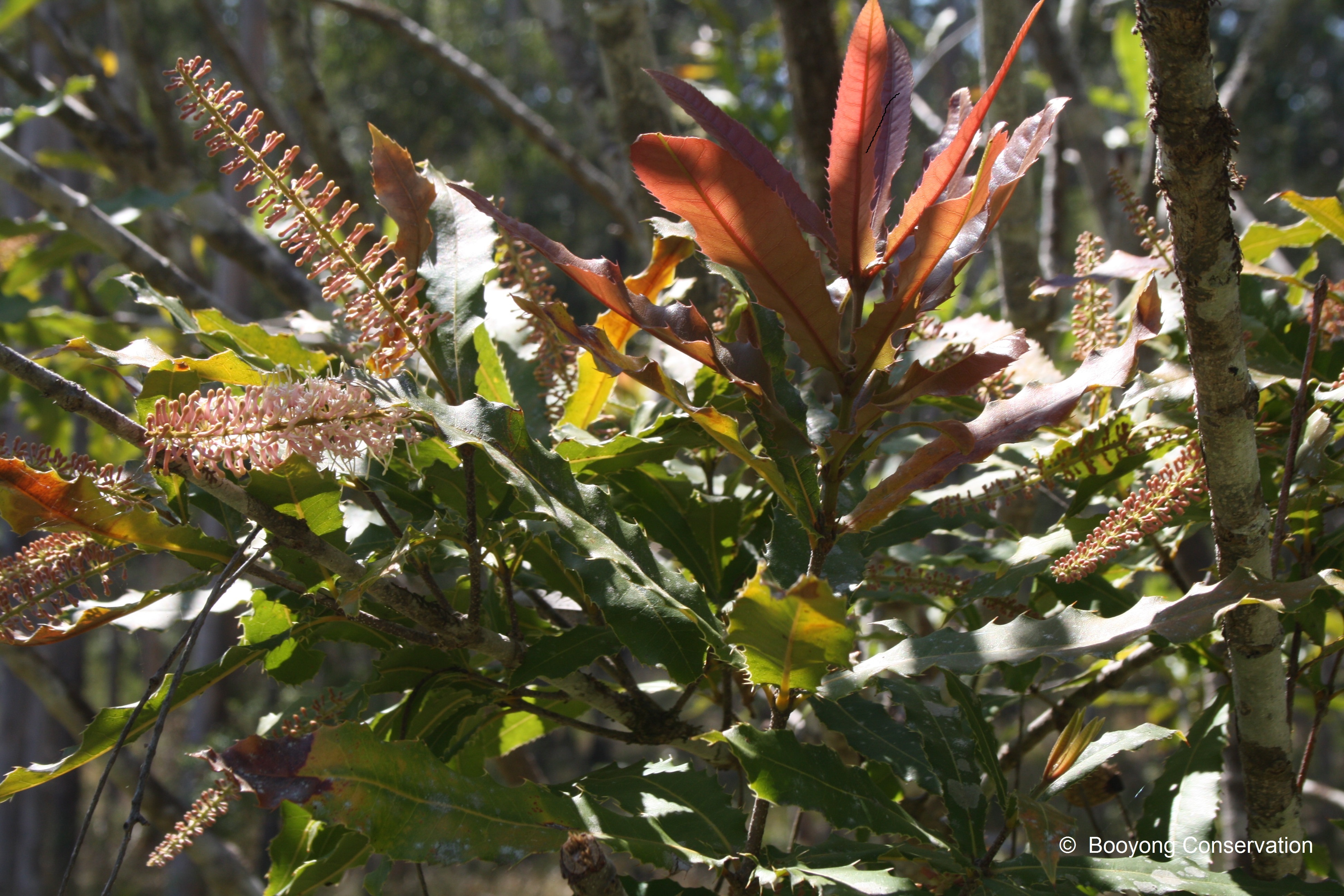 Macadamias are loved by everyone, and for good reason; they taste amazing, are full of good fats and antioxidants, lower bad cholesterol, raise good cholesterol and are good for the heart. Nuts can be eaten raw or roasted and are used in a variety of recipes both sweet and savoury. They are one of Australia’s most successful native plants developed commercially.
Macadamias are loved by everyone, and for good reason; they taste amazing, are full of good fats and antioxidants, lower bad cholesterol, raise good cholesterol and are good for the heart. Nuts can be eaten raw or roasted and are used in a variety of recipes both sweet and savoury. They are one of Australia’s most successful native plants developed commercially.
There are several native Macadamia trees at Booyong and the most magnificent one is located in the Kiwi fruit farm. The tree propagates naturally and you will find many new plants popping up when bushwalking in that area. We are uncertain what to do with them, as we have been advised by one person to let them go as they are, and another person recommended taking the new plants out and keeping them under control so they don’t permeate the whole conservation area. We are thinking about making the walking track at the kiwi fruit farm a boundary and removing new plants that arise, ensuring they don’t cross the path and encroach too much within the Conservation area.
In the short time we’ve been at Booyong it’s been interesting to witness how the change in weather and rainfall affects the production of both the pecan and Macadamia nut. They prefer distinct wet and dry seasons and grow on a large range if soils but prefer well-draining types, clay soil is prone to water logging and in wet periods root rot occurs (5-5.5 Soil PH). They don’t grow well in frost and don’t like temperatures over 38 degrees, because high temperatures reduce growth and increase early dropping of nuts.
Macadamias grow in either light shade or full sun. Late autumn is a good time to plant as it gives the plant plenty of time to get established before the summer months. Whilst this native plant propagates easily from seed and can be propagated from a cutting, a grafted plant is recommended as it will provide more nuts and fruit earlier. Trees should be mulched carefully so the mulch doesn’t reach the tree trunk and they also like a little bit of fertilizer every 2 months from September to May. When fertilising use a native or citrus plant product as they are sensitive to phosphorus.
The macadamia tree flowers in May and flowers are pink or white spikes that hang from the inner branches of the tree. The flowers turn into nuts and take some 9 months to mature. There shells are hard but well worth the effort to break them (I’ve been known to use the vice in the shed – it works wonders). Nuts fall mid-February and continue through till August and fallen nuts are often still in their husk which need to be removed and can be used as mulch.
Interestingly the tree should have a central leader, this is certainly not the case for the three trees we have growing in the orchard and cabin garden and. After harvest internal branches should be removed to open up the trees and allow air circulation. We may look at this when we next visit for the weekend!
We haven’t had much opportunity to cook with the nuts at Booyong as the birds and native bush rats seem to beat us to them but we will persist and let you know how we go.

You must be logged in to post a comment.